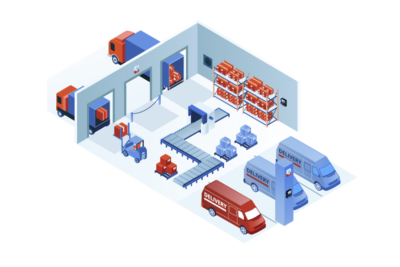Warehouses
Continuous monitoring of Carbon monoxide and Nitrogen dioxide in distribution warehouses
![]() FCS-CGAS-Application-Brochure-Distribution-Warehouse
FCS-CGAS-Application-Brochure-Distribution-Warehouse
A distribution warehouse is a multifaceted building that receives, sorts, stores and ships a massive number of products. Each warehouse varies in size and layout but commonly has truck off-loading bays, large areas with conveyor belts and storage systems and expansive delivery vehicle loading areas. With the large number of vehicles backing up to the loading bays and entering the building to be loaded with forklifts, monitoring levels of carbon monoxide and nitrogen dioxide is necessary to ensure the health and safety of the workers.
Carbon monoxide is the most abundant of the exhaust fumes, but there is also the possibility for nitrogen dioxide from diesel powered engines. If the forklifts are battery powered there should be a hydrogen gas detector in the battery charging area. If the forklifts are powered by natural gas or propane, gas detectors with a methane sensor or propane sensor should be included in the gas detection system.

KEY CONSIDERATIONS
- A life safety system for protecting workers
- Depending on the number of obstacles that prevent airflow, the coverage area may be diminished, requiring more gas detectors
- Audible / visual devices should be mounted high up on the walls or columns
TARGET GASES
- Carbon Monoxide (CO)
- Nitrogen Dioxide (NO2)
- Hydrogen (H2)

